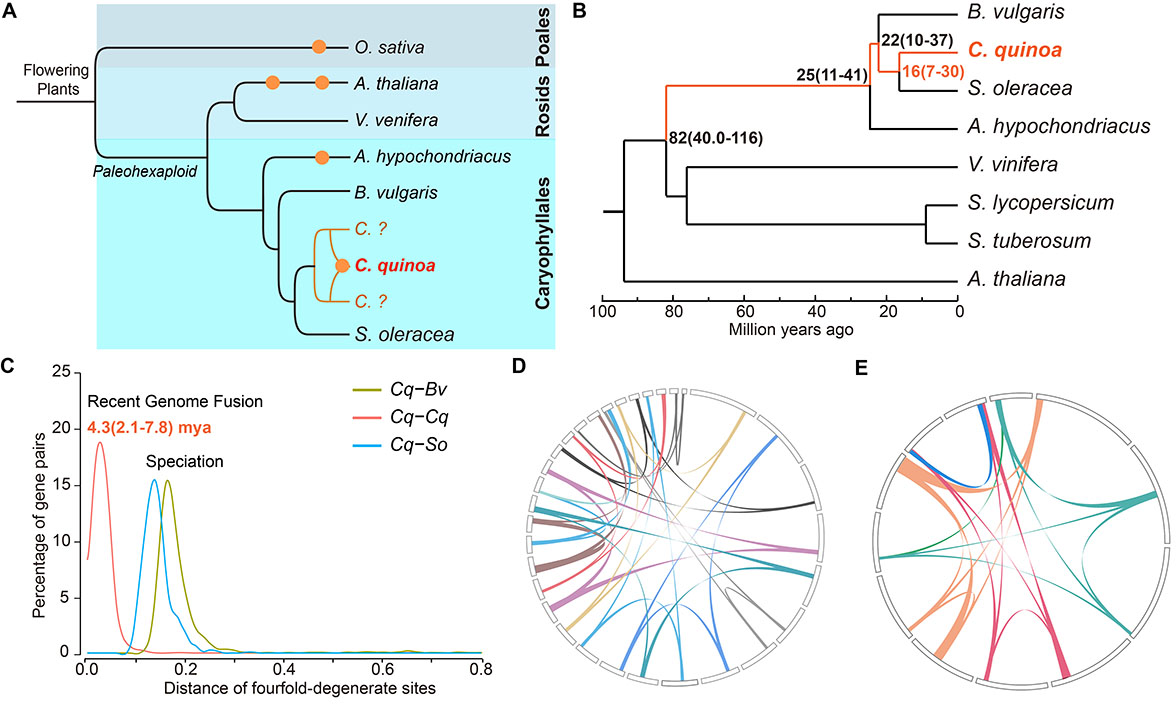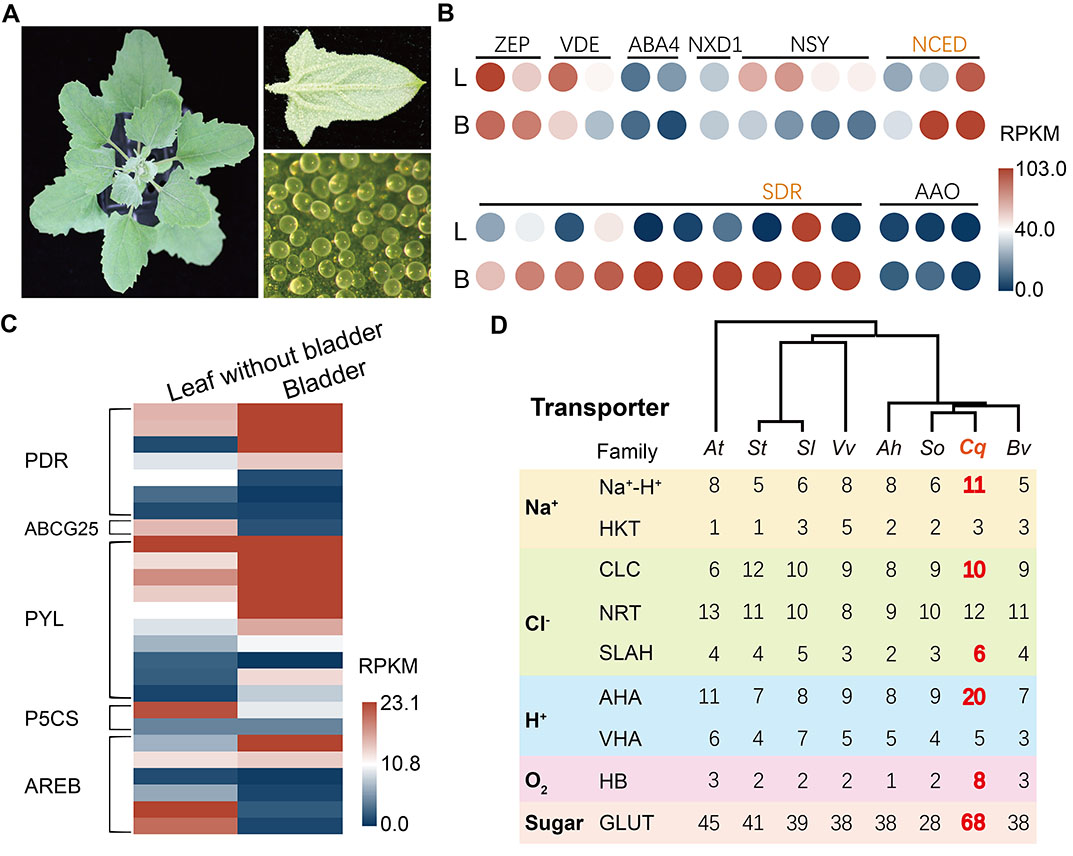New Study Reveals the Molecular Basis of Salt Tolerance and High Nutritional Value of Quinoa
Quinoa (Chenopodium quinoa) is a pseudocereal originated from the Andes of America, domesticated as early as 7000 years ago. Its grains, which contain very balanced nutritional contents, contribute to the globally increasing cultivation, and thus are chosen by NASA as a food source for astronauts. In addition, quinoa exhibits excellent slat tolerance. Though grown normally under non-saline environment, it achieves the highest biomass in the presence of 100 mM sodium chloride and the biomass decreases by only 20-50% in the presence of 500 mM sodium chloride (seawater level). Thus it was proposed that quinoa cultivation can allow efficient utilization of saline lands and contribute to food security in the future.
Recently, a collaborative study led by Dr. ZHANG Heng, Dr. ZHU Jian-Kang at Shanghai Center for Plant Stress Biology (PSC), Shanghai Institute of Plant Physiology and Ecology (SIPPE), Chinese Academy of Science (CAS) and Dr. HEDRICH Rainer from University of Wuerzburg, Germany, revealed the molecular basis of salt tolerance and high nutritional value in quinoa through genomic and transcriptomic analyses.
The organism of quinoa experienced a whole genome duplication event about 4.3 million years ago. The researchers generated a high-quality genome assembly of quinoa through hybrid assembly of 2nd generation and 3rd generation high throughput sequencing data with a total length of 1.34 Gb and scaffold N50 at 1.16 Mb. Genome annotation revealed 54,438 protein-coding genes and 192 microRNA genes. Among the expanded gene families were genes involved in ion and nutrient transport, ABA homeostasis and ABA signaling. The three main families of seed storage proteins all contained significantly higher proportions of essential amino acids than other cereals, partly explaining the high nutritional value of quinoa grains.
Epidermal bladder cell (EBC) is present in about half of all halophytes and plays important roles in the salt tolerance of quinoa. Previous studies indicated that the volume of EBCs could be 1000-fold of that of normal epidermal cells and the accumulated ion concentration of EBCs could be as high as 1 M. By comparing the gene expression in the EBC, leaf without EBC and the whole leaf, the researchers found that EBC exhibited a very different transcriptome profile compared to other tissues of quinoa and showed high expression in genes involved in wax biosynthesis and sugar transport.
Further studies also identified multiple ion transporter genes that are specifically expressed in EBCs, whose expression was not affected by salt treatment of quinoa, suggesting that the transporters are constitutively active or regulated at the post-translational level. Based on these results, the researchers proposed a molecular model that helps explain the ion movement from epidermal cells to bladder cells in quinoa.
The work, entitled “A high-quality genome assembly of quinoa provides insights into the molecular basis of salt bladder-based salinity tolerance and exceptional nutritional value”, was published in Cell Research on October 10, 2017. It is funded by Chinese Academy of Sciences, Ministry of Science and Technology of China, China National Science Foundation and Australian Research Council.
Article website:
http://www.nature.com/cr/journal/vaop/ncurrent/full/cr2017124a.html


Author contact:
ZHU Jiankang, Senior Principal Investigator
Shanghai Center for Plant Stress Biology (PSC),
Shanghai Institute of Plant Physiology and Ecology (SIPPE)
Chinese Academy of Science (CAS)
Phone: (86) 21-57078201
Fax: (86) 21- 57078213
Email: jkzhu@sibs.ac.cn
ZHANG Heng, Support Principal Investigator
Shanghai Center for Plant Stress Biology (PSC),
Shanghai Institute of Plant Physiology and Ecology (SIPPE)
Chinese Academy of Science (CAS)
Phone: (86) 21-57078233
Email: hengzhang@gmail.com
Rainer Hedrich, Professor
Institute for Molecular Plant Physiology and Biophysics
University Würzburg
Phone: +49 (0)931 / 31 86100
Email: hedrich@botanik.uni-wuerzburg.de